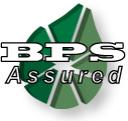Nationwide Boiler's Director of Environmental Solutions, Sean McMenamin, provided content for this month's issue of Process Heating Magazine. The topic of discussion this time around is reducing NOx emissions and improving overall boiler efficiency.
Sean has provided six tips to ensure the highest possible thermal efficiency, and lowest possible NOx output. This includes:
1. Reducing Stack Gas Temperature to Increase Efficiency
2. Managing Excess Air Levels for Optimum Performance
3. Utilizing Flue Gas Recirculation (FGR) to Reduce NOx Emissions
4. Selective Catalytic Reduction for Ultra-Low NOx Performance
5. Combining Economizers & SCR Systems for Emissions & Efficiency Gains
6. Monitoring Emissions & Efficiency Performance
For additional details related to these tips and tricks for reducing NOx and increasing efficiency, check out the full article in Process Heating's September 2018 issue!



